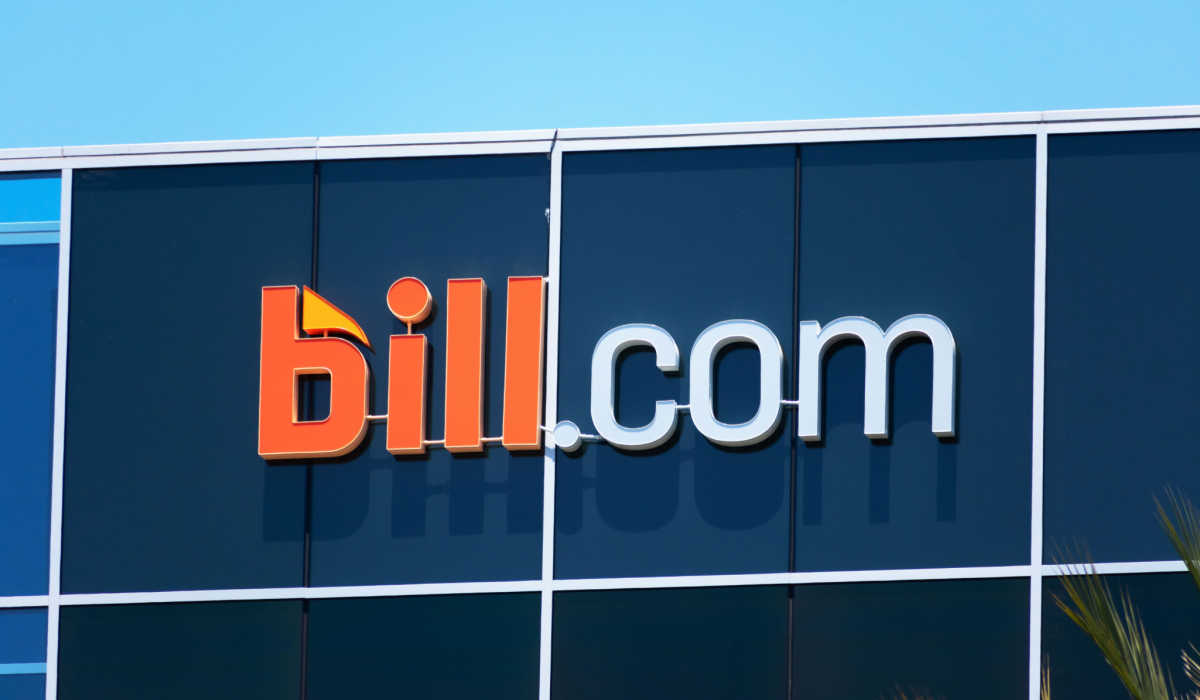What Headwinds? B2B Digital Payments Shift Still Growing

Payment digitization continues its inexorable march to dominance. Lest one is tempted to think that momentum might have slowed after the pandemic served as an explosive catalyst to the upside in the number of businesses automating manual billing processes, at least one digital platform’s latest results belie that notion.
During the company’s fiscal fourth quarter earnings call on Thursday, management at the maker of automated bill payment software noted that 400,000 businesses were using the company’s product, three times the number of users a year ago.
Bill.com offers solutions like automated bill payments (which can route clients’ bills and save them time), numerous flexible payment options such as same- or next-day payments and a single platform that can be accessed from any device.
CEO Rene Lacerte cited a case study of one of its customers saving 10 hours per week paying hundreds of bills each month by eliminating the manual processes — writing checks, attaching stamps and sealing envelopes — prior to using Bill.com. And he said the company anticipates robust growth among small and midsize businesses looking to do more with less in the face of rising prices and a potential recession.
“There are more than 30 million small businesses in the US and 70 million globally, and the majority still use manual, paper-based processes,” Lacerte said.
Partner Distribution
PYMNTS research backs him up. In fact, 69% of B2B buyers it surveyed recently in the Global B2B Payments Playbook, a PYMNTS and Worldpay collaboration, said they want their suppliers to provide them new ways to access products and services — and that includes their bookkeepers.
The company reported that more than 6,000 accounting firms use Bill.com to automate their clients’ financial operations, including at least one of the top 20 accounting firms in the U.S. Using such platforms relieves accountants of the much-loathed, low paying bookkeeping business.
In addition, six of the top 10 financial institutions in the U.S. Thus, banks are using partnerships with such solution providers to help their SMB clients digitize the payments function.
The company launched a white label platform with Bank of America to serve their new SMB customers and entered an agreement with CPA.com to be their exclusive partner for spend and expense.
The Flywheel Effect
As is the case with digital payments in general, momentum is to a great extent self-reinforcing. As more companies on both sides of the accounts payable and accounts receivable divide adopt digital payments, they pressure late adopters to join the movement, yielding organic growth.
This is known in the industry as the flywheel effect. More subscribers drive more transactions, delivering more network members, which in turn grows platform data assets. Expanded data sets feed better machine learning capabilities, driving better platform experiences and more time savings, which encourages further platform adoption.
Tailwinds
The B2B payment platform sector is benefitting from tailwinds. First, momentum from the pandemic surge toward digitization continues. Second, the mobile first secular trend, which increases the appeal of the ability to have the financial back office in your back pocket. Third, the fact that in inflationary times, the only deflationary impact you can have on your businesses to take advantage of software and create more efficiencies across financial operations.
Room to Grow
B2B payments — and specifically the technology underpinning those payments — has some catching up to do to help small- to medium-sized businesses (SMBs) alleviate pain points.
“The AP/AR Quick-Start Guide,” a PYMNTS and Plastiq collaboration, revealed that paper-based and manual tasks still dominate, and automated clearing house (ACH) transfers are relatively slow, in a world where always-on commerce dominates, and where supply chain snarls can bedevil cash flows.All too often, as the report showed, there exists an asymmetry between the preferred payment methods and accounts payable (AP) and accounts receivable (AR) integrations of the payor and biller.
All-in-one solutions that provide convenient and automated AP/AR management can help eliminate those asymmetries.
Of the SMBs that said they had embraced all-in-one payment solutions, 81% said they did so because these payment platforms helped reduce the time it took to receive payments. Forty-four percent of SMBs use an all-in-one payment platform because it simplifies payables tracking in making payments.
